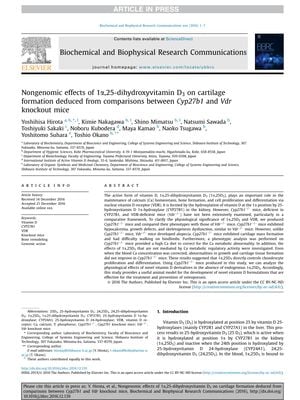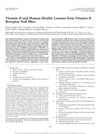Nongenomic Effects of 1α,25-Dihydroxyvitamin D3 on Cartilage Formation Deduced from Comparisons Between Cyp27b1 and Vdr Knockout Mice
January 2017
in “
Biochemical and biophysical research communications
”

TLDR 1α,25-dihydroxyvitamin D3 directly affects cartilage growth and development.
The study compared Cyp27b1−/− mice, deficient in CYP27B1, with VDR-deficient mice (Vdr−/−) to understand the physiological significance of 1α,25-dihydroxyvitamin D3 (1α,25D3) and its receptor. Both types of mice exhibited hypocalcemia, growth defects, and skeletogenesis dysfunction, but only Vdr−/− mice developed alopecia. Cyp27b1−/− mice also showed cartilage mass formation and walking difficulties. Even with corrected blood calcium levels, growth and cartilage abnormalities persisted in Cyp27b1−/− mice, indicating that 1α,25D3 directly influences chondrocyte proliferation and differentiation. This study provided a valuable animal model for developing new vitamin D formulations for osteoporosis treatment and prevention.


